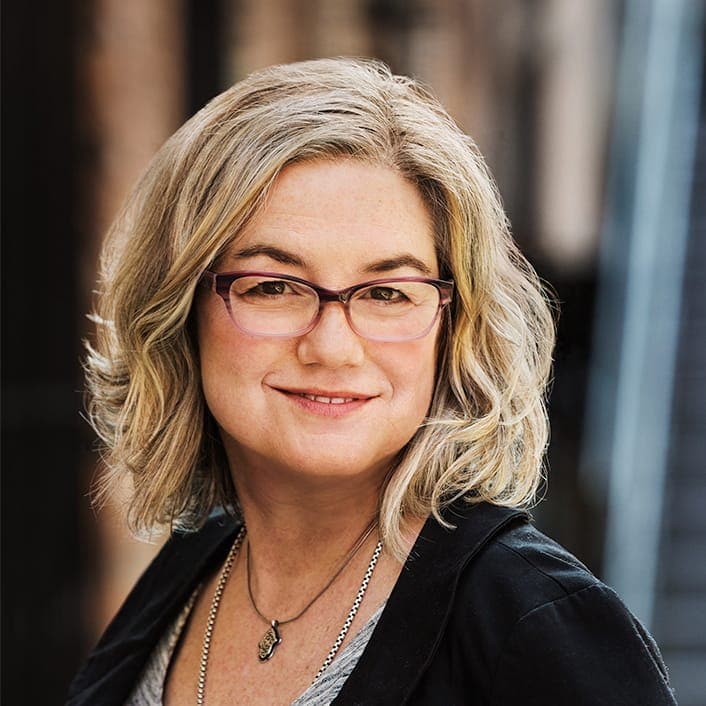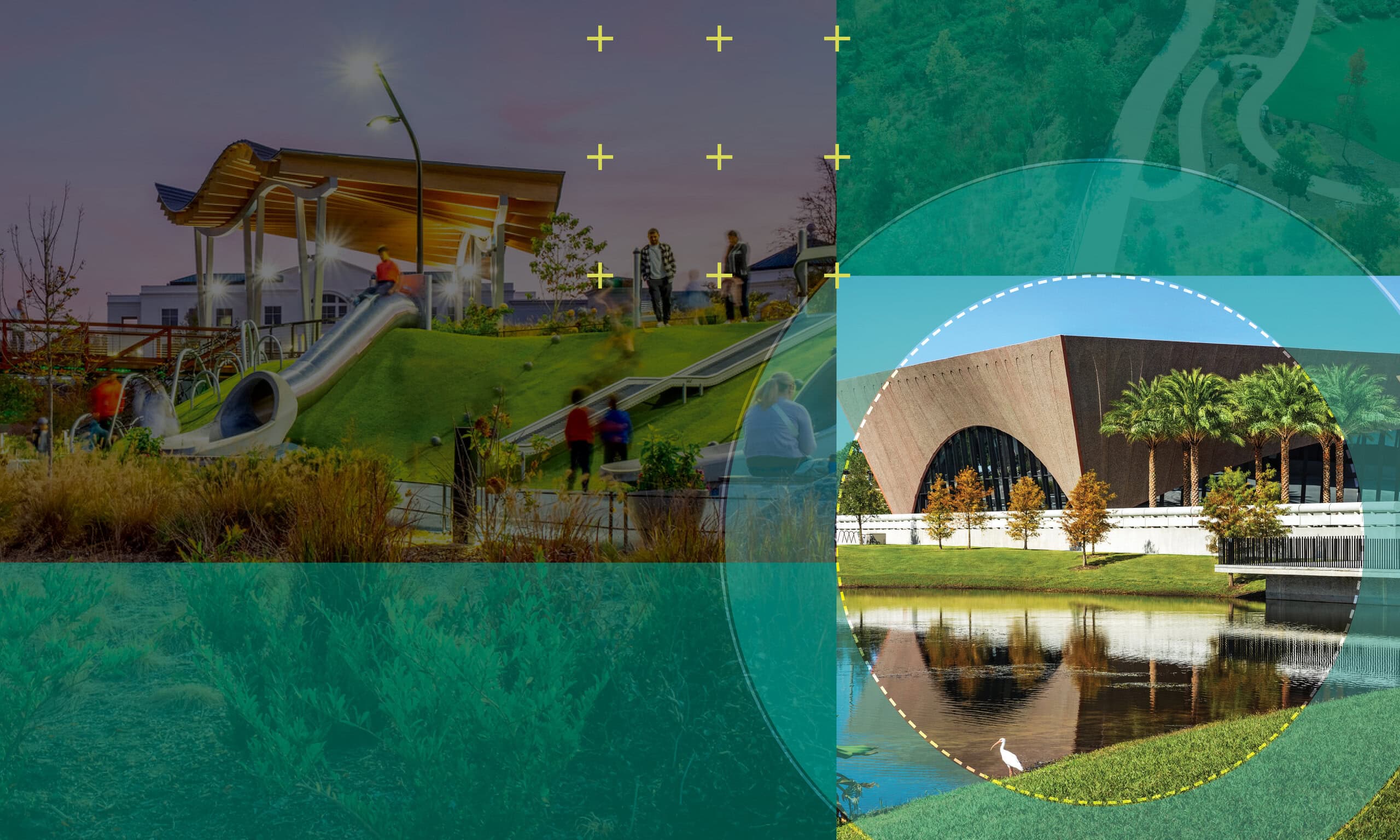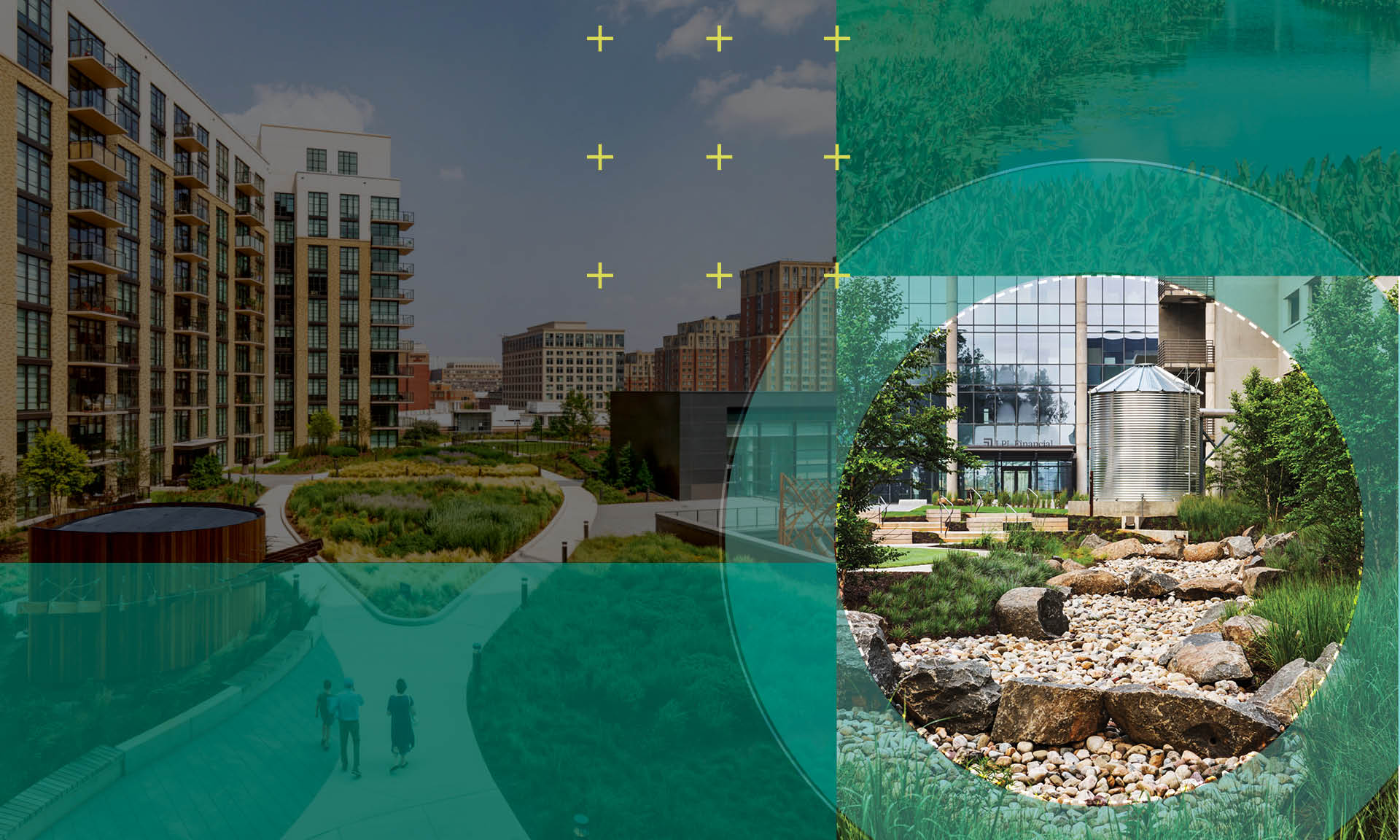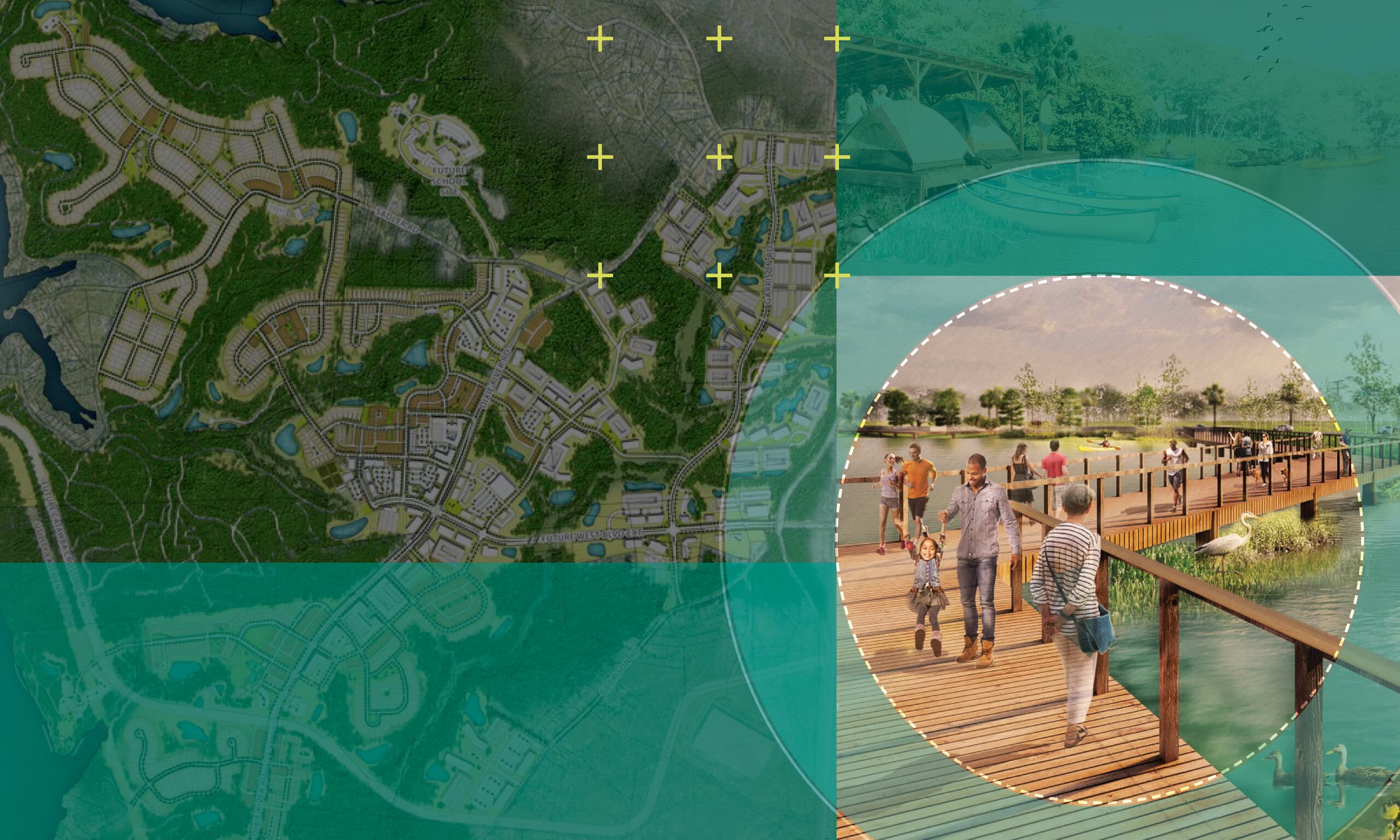The room hums with energy as neighbors gather around tables covered in maps and sketches, sharing concerns about safety, hopes for a new park, and questions about how the plan will take shape. This is where resilience begins: not with drawings or data, but with people coming together to imagine what’s possible.
Collaboration is at the heart of every resilient project. It’s what turns ideas into action and ensures that the places we design reflect the needs and values of the people they serve.
Designing With Communities, Not Just for Them
True collaboration is more than a box to check at the start of a project. It’s the foundation of lasting impact. By engaging trusted partners, local agencies, and community members, we bring a diversity of voices to the table, each with its own perspective and lived experience.
As LandDesign Principal Beth Poovey, PLA explains, “True resilience comes from shared ownership. When people feel part of the process, they’re more motivated in protecting and sustaining the places we create together.”
Building trust through this process is essential. When residents understand why decisions are being made and see themselves in the outcome, the resulting spaces are more meaningful, more resilient, and more widely supported.
Collaboration in Action
Collaboration looks different depending on the community, the site, and the scale of the project. Whether it’s a regional recreation destination or a small neighborhood park, the process is rooted in listening. Two recent projects, the Lake Wauburg Master Plan and Wilmore Centennial Park, show how thoughtful engagement and strategic partnerships lead to spaces the reflect the community they serve.
Lake Wauburg Master Plan – Large-Scale Visioning
In Micanopy, Florida, LandDesign, in partnership with Cooper Carry Architects, is reimagining the University of Florida’s 85-acre outdoor recreation facility. From the start, engagement with students, faculty, and staff has been central to the process. Visioning sessions, open houses, and design workshops gave stakeholders a direct role in shaping the future of Lake Wauburg. This transparent and inclusive process created a plan that reflects a wide range of voices while building trust among those who will ultimately use and care for the space.
As Carrie Read, PLA, the project’s lead designer, shares, “Lake Wauburg is a beloved resource for both the University of Florida and the local community. By listening closely and involving stakeholders at every step, we’ve created a plan that feels authentic, resilient, and achievable — one that reflects both the site and the people who will experience it.”
Wilmore Centennial Park – Neighborhood-Scale Impact
On a smaller scale, Wilmore Centennial Park in Charlotte, North Carolina, shows how collaboration can transform even a dense urban site. Delivered through a public-private partnership between Mecklenburg County, Beacon Partners, and LandDesign, this 1.16-acre park serves as a vital green space in Charlotte’s growing South End neighborhood.
Early in the process, community members were given “Wilmore Bucks,” a creative engagement tool that allowed them to vote on preferred amenities within the park. This interactive exercise helped set priorities and align design decisions with both community desires and budget realities. The result is a park that demonstrates how small-scale projects can make a big impact when the community is involved from the start.
The Ripple Effect of Collaboration
Collaboration builds trust, strengthens communities, and lays the groundwork for places that last. It’s the first step toward resilience — and one that shapes every decision that follows. By designing with communities, not just for them, we create spaces that are more adaptable, more sustainable, and more meaningful.
In our next post, we’ll explore how future-ready planning helps communities prepare for the challenges ahead and ensures that today’s decisions create value well into the future.






